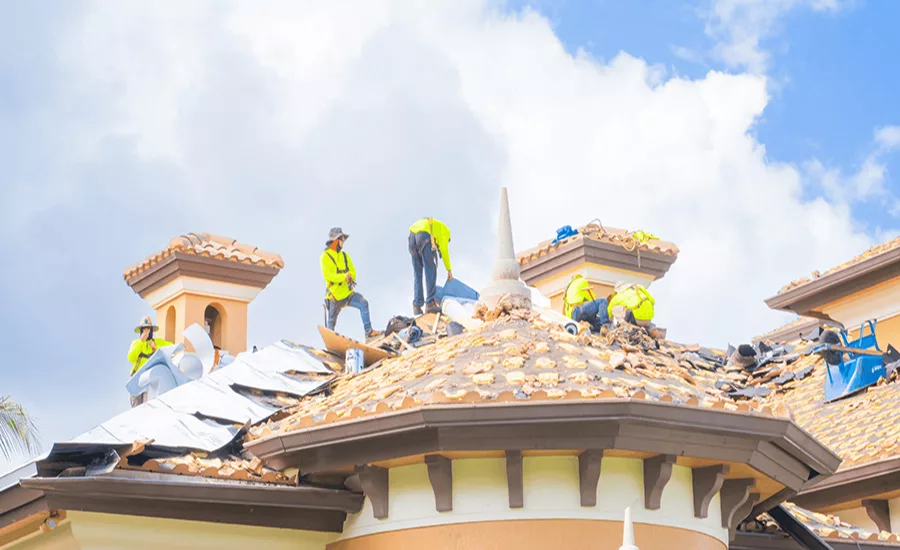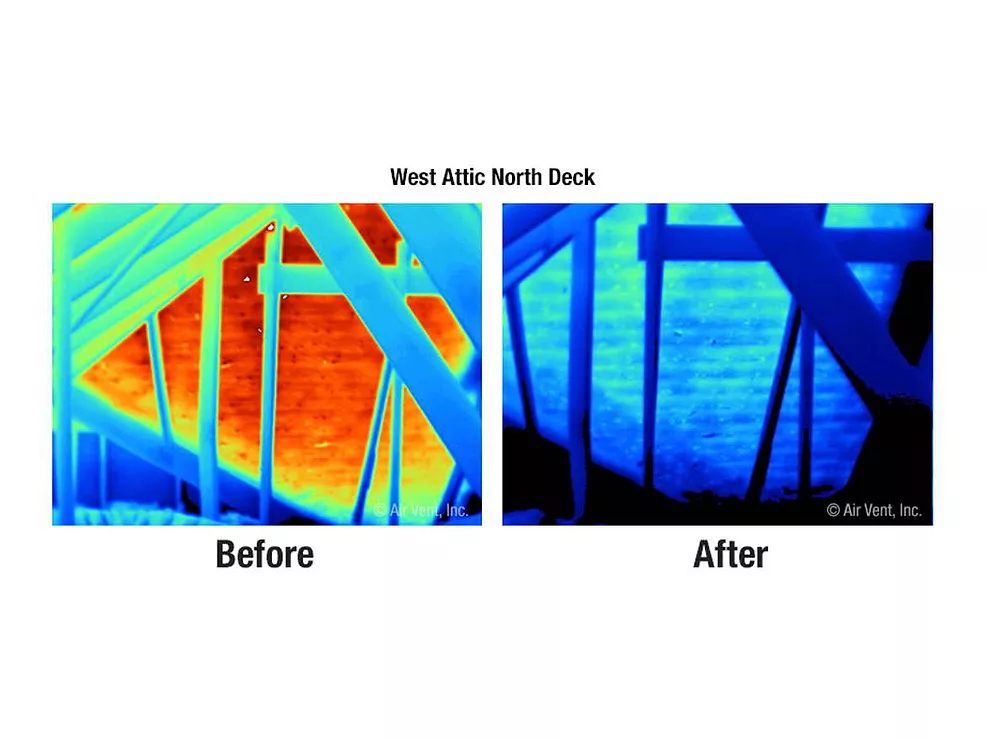News Analysis
Roofing is Left Exposed by Trump’s Deportation Flip-Flop
Despite contributing more to GDP, the construction industry was left out of Trump’s brief ICE enforcement pause

Workers install a roof in South Florida, where the state has recently become the center of intensified ICE enforcement. Undocumented workers make up 36% of the U.S. roofing workforce, leaving contractors and workers alike vulnerable.
— Image courtesy of Florida Coast Contracting
President Donald Trump’s June 12 post on Truth Social promising “changes … to protect” farmers and hotel operators from ICE raids set off a whirlwind of policy reversals that have left construction contractors scrambling to predict enforcement priorities.
What began as an apparent exemption for agriculture and hospitality was quietly rescinded two days later, only to be replaced by a renewed push for nationwide deportations, underscoring a pattern of abrupt shifts carrying significant consequences for the roofing and building trades.
The episode began when Trump posted that his “very aggressive policy on immigration” was “taking very good, long time workers away” from farms and hotels, and vowed that “changes are coming” to shield those sectors from worksite enforcement.
Within hours, an internal Department of Homeland Security memo — first reported by Working Immigrants and confirmed by The Washington Post — directed ICE agents to “hold on all worksite enforcement investigations/operations on agriculture (including aquaculture and meat packing plants), restaurants and operating hotels.”
Two days later, on June 14, DHS officials signaled an abrupt reversal; on June 16, supervisors at 30 ICE field offices were instructed to resume enforcement at farms, hotels and restaurants.
That same evening, the president again went onto his social media site, writing that ICE must “expand efforts to detain and deport illegal aliens in America’s largest cities” as part of what he termed the “single largest mass deportation program in history.”
The sudden shift — from initial protection to outright repudiation — underscores policy whiplash at the highest levels of government and the difficult circumstances many firms, particularly small businesses, face as they try to navigate the volatility.

The Value of Construction
For roofing and building contractors, the stakes could not be higher. Construction accounts for 4.5% of U.S. gross domestic product, compared with 0.9% for agriculture and 3.3% for accommodation and food services, according to the Bureau of Economic Analysis. Undocumented workers make up roughly 13.7% of the construction workforce — about 1.5 million people — compared to 12.7% of agricultural laborers and 7.1% of hospitality staff, according to aggregated estimates compiled by the Center for American Progress, the American Immigration Council, and ConstructConnect.
In 2022, undocumented workers collectively remitted $33.9 billion in Social Security, Medicare and unemployment taxes, with construction alone contributing $8.7 billion. Their payroll taxes support entitlement programs from which they receive no benefits.
RELATED
Florida Emerges as the Epicenter of ICE Raids
A recent story from Key West, Fla., that grabbed national headlines underscores the environment. As Roofing Contractor reported last week, the Sunshine State has become the nexus of ICE enforcement targeting the construction industry,
Vincent Scardina, owner of A Plus Roofing, said ICE agents detained six of his employees en route to a jobsite — one‑third of his workforce — leaving his business reeling.
“It’s going to be really hard to replace those guys,” Scardina told WTVJ‑TV. “In Key West, you don’t just pull replacements from a big labor pool, and training takes years.”
Video Courtesy of NBC Miami
With supplies constrained by both geography and manpower, Scardina warned that many small contractors could face furloughs or delays without stable access to experienced crews.
The sudden carve‑out and rapid retrenchment reflect competing pressures within the administration.
Agriculture and hospitality benefit from established guest-worker programs — specifically, H-2A visas for farm work and various seasonal categories for hotels and restaurants — that provide those industries with direct lobbying channels.
Construction still lacks a dedicated visa category, which has been a focus of industry trade groups, including the National Roofing Contractors Association and the Associated Builders and Contractors, to press for an “H2C” program.
“Immigrant labor is indispensable to the roofing industry,” said Duane Musser, vice president of government relations for NRCA. “NRCA is briefing members of Congress and the administration on our workforce challenges.”
The NRCA has launched a new information tool on its website to help members navigate the unprecedented scrutiny facing its labor force.
ABC’s Kristen Swearingen noted that the industry faces a shortfall of 439,000 workers in 2025 alone and urged market‑based visa reforms to secure our supply chains and economic security.
“Construction workers are fundamental to our economic security, and the lack of legal channels to hire immigrant workers threatens the stability of supply chains, the viability of small businesses and the strength of the American economy,” Swearingen wrote in an email.
On Monday, the president doubled down on his reversal by ordering ICE to “do all in their power” to reach the administration’s mass deportation goals, The Hill reported. Last month, Deputy Chief of Staff Stephen Miller stated that the administration’s goal was a minimum of 3,000 ICE arrests per day.
Legal experts say ICE already has blanket authority to enforce immigration laws nationwide, making Trump’s singling out of “largest cities” largely symbolic and aimed at rallying his political base.
This latest episode fits a broader pattern of administration “flip‑flops,” most notably Trump’s rollout and subsequent retreat from Liberation Day tariffs and other levies. Financial Times columnist Robert Armstrong coined the approach "TACO trade" last month, describing how some investors anticipate market rebounds amid Trump's on-again, off-again tariff policies.
RELATED
Roofing Exhales as Court Strikes Down Trump’s ‘Liberation Day’ Tariffs
The White House’s internal tug-of-war on immigration has been driven, in part, by hard-line advisers like Miller. It mirrors past promises on issues ranging from travel bans to the southern border wall, highlighting the tension between political promises and economic realities.
Contractors are left to operate in an environment of uncertainty. Today’s pause in worksite enforcement may disappear tomorrow, and without a stable visa framework, roofing crews must contend with the risk of sudden workforce disruptions.
Trade associations have responded with policy briefs, legal analysis and direct advocacy, but the lack of a clear, industry‑wide solution means contractors must plan for volatility.
Until Congress enacts comprehensive immigration reform — ideally establishing a legal channel for essential construction labor — roofing and building firms will continue to face the challenge of maintaining project timelines and competitiveness under the shadow of abrupt enforcement swings.
Looking for a reprint of this article?
From high-res PDFs to custom plaques, order your copy today!







